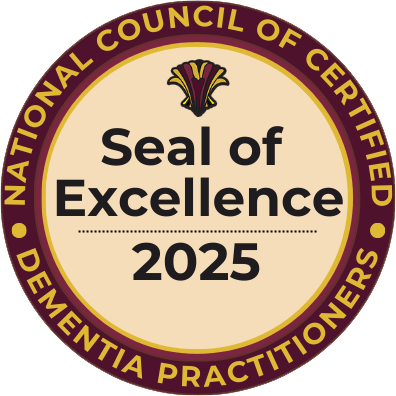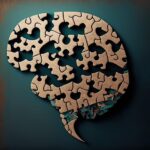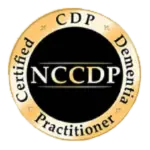Introduction
Dementia is a complex neurological condition that affects millions of people worldwide. It’s not a single disease but rather a group of symptoms characterized by a decline in cognitive function severe enough to interfere with daily life. Understanding the various types of dementia, their symptoms, and available treatment options is crucial for both persons affected by dementia and caregivers. In this post, we’ll explore different types of dementia, their symptoms, and approaches to treatment.
Types of Dementia
- Alzheimer’s Disease:
- Alzheimer’s disease is the most common form of dementia, accounting for around 60-80% of cases.
- Symptoms often include memory loss, difficulty in problem-solving, confusion about time or place, and challenges in completing familiar tasks.
- The exact cause of Alzheimer’s is not fully understood, but it involves the accumulation of abnormal proteins in the brain.
- Vascular Dementia:
- Vascular dementia is caused by reduced blood flow to the brain, typically due to stroke or small vessel disease.
- Symptoms may include difficulty with planning, organizing, or making decisions, as well as sudden changes in behavior or mood.
- Risk factors include high blood pressure, diabetes, smoking, and high cholesterol.
- Lewy Body Dementia (LBD):
- LBD is characterized by the presence of abnormal protein deposits called Lewy bodies in the brain.
- Symptoms may include visual hallucinations, fluctuating cognitive abilities, REM sleep behavior disorder, and Parkinson’s-like motor symptoms.
- Diagnosis can be challenging due to overlapping symptoms with other forms of dementia.
- Frontotemporal Dementia (FTD):
- FTD encompasses a group of disorders characterized by progressive damage to the frontal and temporal lobes of the brain.
- Symptoms may include changes in personality, behavior, and language difficulties.
- Onset typically occurs at a younger age compared to other forms of dementia.
Symptoms
• While specific symptoms vary depending on the type of dementia, common signs include memory loss, difficulty communicating, impaired reasoning, and changes in mood or behavior.
• Early detection of symptoms is crucial for prompt diagnosis and intervention.
Treatment Options
• While there is currently no cure for most types of dementia, several treatment approaches can help manage symptoms and improve quality of life.
• Medications such as cholinesterase inhibitors (e.g., donepezil, rivastigmine) may be prescribed to alleviate cognitive symptoms in Alzheimer’s disease.
• Non-pharmacological interventions, including cognitive stimulation therapy, occupational therapy, and psychosocial support, can help maintain function and independence.
• Lifestyle modifications such as regular exercise, a healthy diet, social engagement, and cognitive activities may also help slow disease progression and improve overall well-being.
Dementia presents significant challenges for both persons living with dementia and caregivers, but early detection and appropriate management can make a substantial difference in quality of life. Ongoing research continues to advance our understanding of dementia and holds promise for future breakthroughs in treatment and prevention strategies.
How NCCDP Can Help
Becoming a Certified Dementia Practitioner (CDP) through the National Council of Certified Dementia Practitioners (NCCDP) involves completing specific educational requirements and passing an exam. Here’s a step-by-step guide on how to become a CDP:
- Eligibility Requirements:
Before pursuing certification, ensure you meet the eligibility criteria set by NCCDP. Generally, candidates must have relevant work experience in a healthcare or caregiving setting, such as nursing, social work, activities coordination, or direct care. - Training:
Enroll in an NCCDP-approved Alzheimer’s Disease and Dementia Care Seminar. These seminars are typically offered either in-person or online and cover essential topics related to dementia care, including understanding dementia, communication techniques, behavior management, and caregiver support. - Attend a Seminar:
Participate in a seminar, which is led by expert instructors who are knowledgeable about dementia care practices. The seminar provides valuable insights, practical skills, and resources to prepare you for the role of a dementia practitioner. - Complete Your Application:
After completing the seminar, submit your application for certification to NCCDP. The application will require documentation of your educational background, work experience, and seminar attendance. - Maintain Certification:
After passing the exam and obtaining your CDP certification, you’ll need to maintain your certification through ongoing education and professional development. NCCDP requires certified practitioners to renew their certification every two years by completing healthcare continuing education credits. - Continuing Education:
Stay updated on the latest developments in dementia care by participating in workshops, conferences, webinars, and other educational opportunities. Continuing education ensures you remain current with best practices and evidence-based approaches in the field of dementia care.
Conclusion
By following these steps and successfully completing the certification process, you will become a Certified Dementia Practitioner recognized by NCCDP. This credential demonstrates your commitment to providing high-quality care for individuals living with dementia and their families, and it enhances your professional expertise in this specialized area of healthcare.























